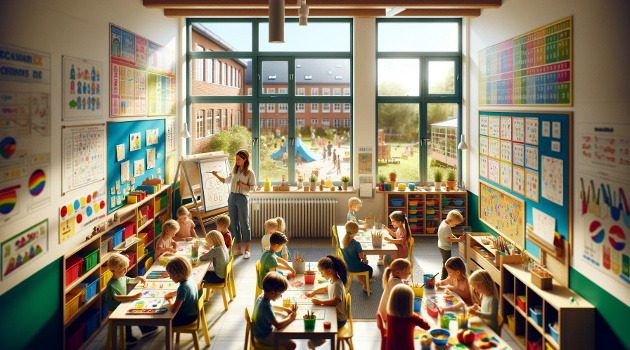In recent years, we’ve seen dramatic expansions of school choice in West Virginia, Arizona, Iowa, Utah, Arkansas, Florida, Indiana, Oklahoma, and North Carolina.
Given the crummy performance of government schools, that’s is great news for families in those states (and also for taxpayers).
But let’s not forget the global evidence. I’ve already written about the very successful choice-based systems in Canada, Sweden, Chile, and the Netherlands.
Today, let’s look at school choice in another nation.
The Fraser Institute just published The Free Enterprise Welfare State: A History of Denmark’s Unique Economic Model. Chapter 4, authored by Paige MacPherson, looks at the country’s education system.
Danish schools are characterized by diversity, autonomy, and a uniquely long-standing historical commitment to government-funded independent schools and parental choice in education… Primary and lower secondary independent schools—which account for about 45 percent of the schools in Denmark…—are supported financially by the government via a school choice system, at about 75 percent of the rate of fully funded government schools. …Danish parents can choose the school to which they send their child. Today, about 16 percent of students attend an independent school and that share is growing. …The expansion of school choice policies in Denmark in the 1990s and early 2000s coincided chronologically with a 45 percent increase in independent school enrolment and a corresponding decrease in government public school enrolment from 1998 to 2018. Over the same period, secondary graduation rates and student achievement in mathematics and reading improved, particularly in independent schools. …This improvement, following the expansion of the country’s school choice policies, was achieved without increasing education spending as a share of gross domestic product (GDP) or as a share of total government spending.
Here’s a chart looking at the performance of private schools compared to government schools.

This excerpt from the conclusion is also worth sharing.
The expansion of Denmark’s school choice policies in the 1990s and early 2000s coincided with a 45 percent increase in independent school enrolment between 1998 and 2018, decreasing enrolment in government public schools, increasing secondary graduation rates, and increasing student achievement in math and reading, particularly in independent schools, which have lifted student achievement since the country’s school choice policies were expanded.
The bottom line, as explained in this 2010 video, is that school choice is the right approach.
P.S. Getting rid of the Department of Education in Washington would be a good idea, but the battle for school choice is largely won and lost on the state and local level.



